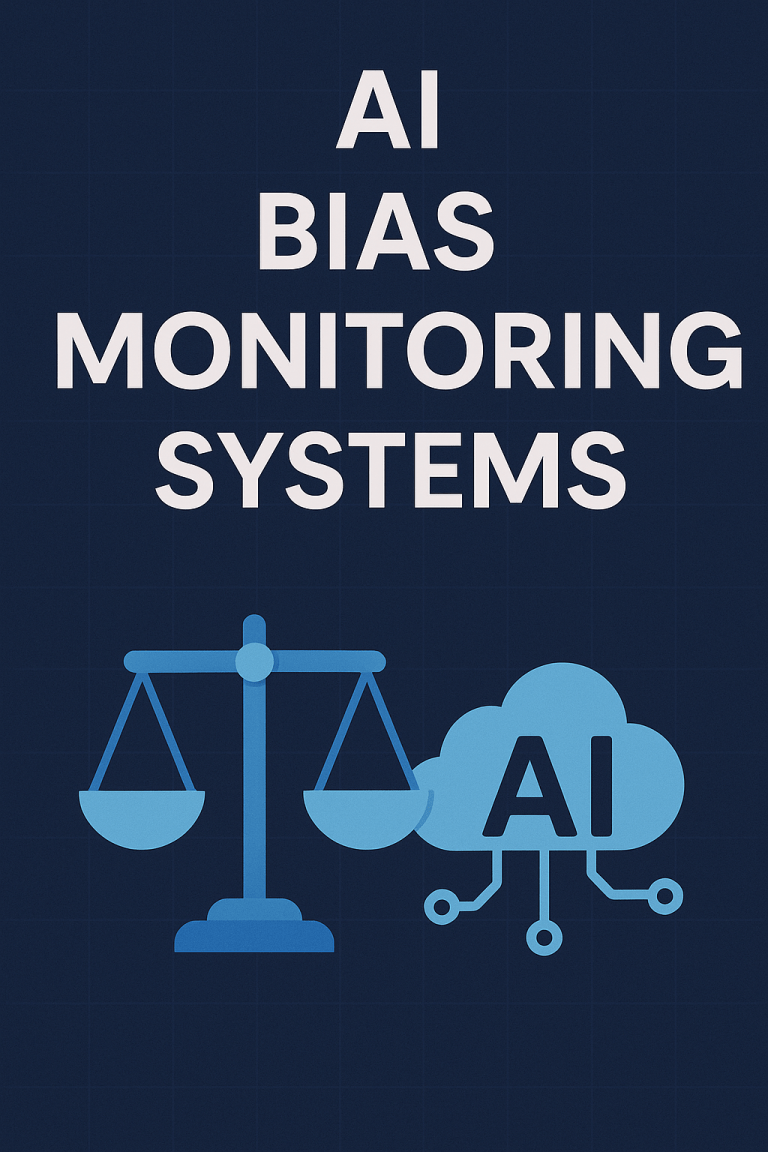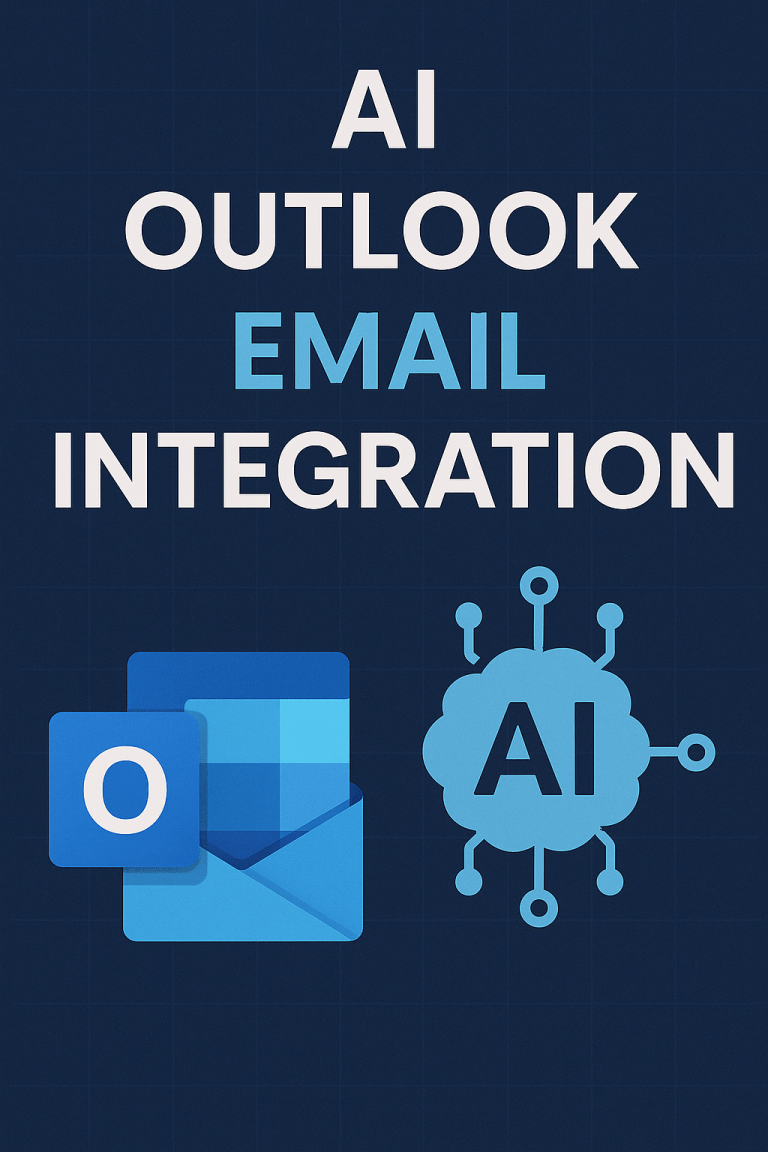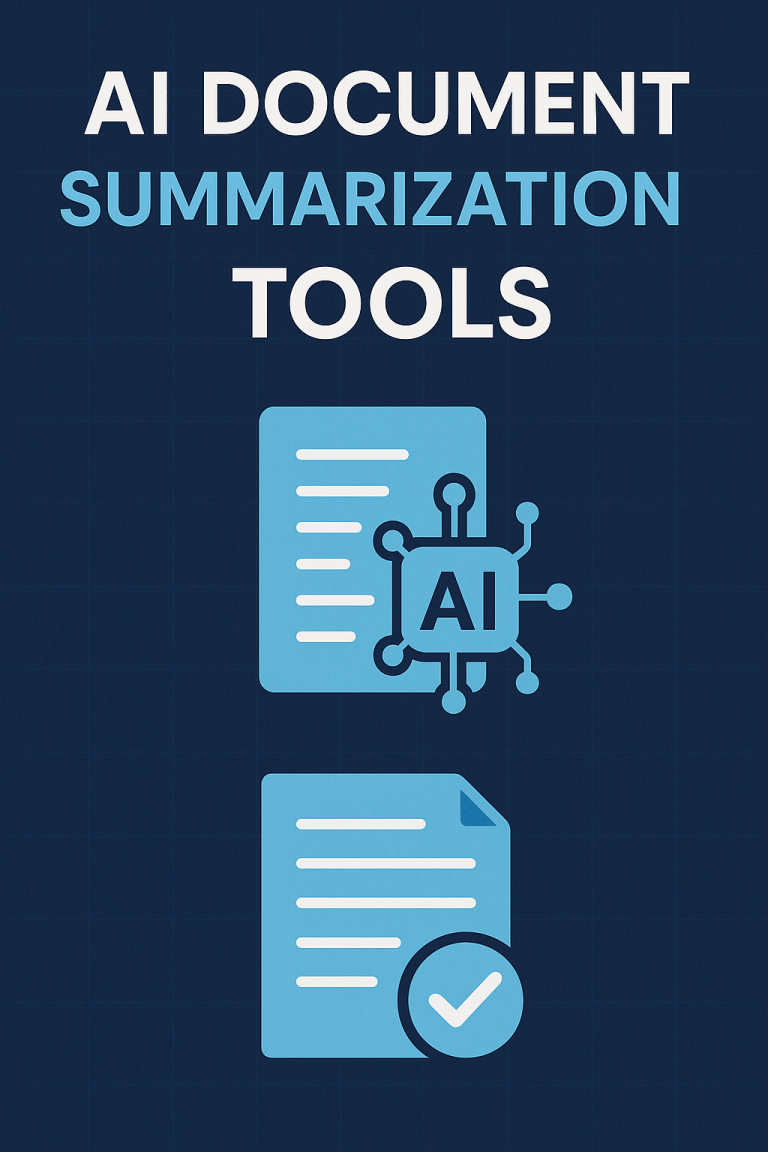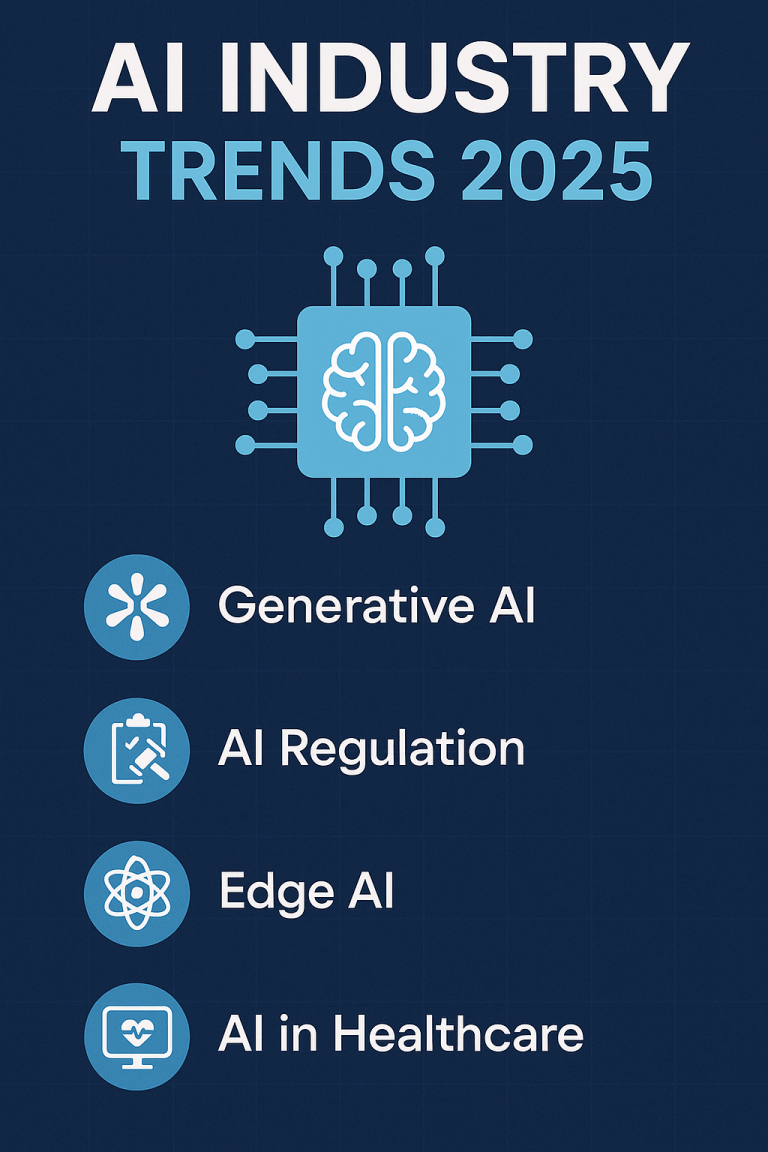
Why Some AI Tools Take Minutes To Learn While Others Take Months
Do you find yourself spending more time learning AI tools than using them? You’re not alone. The learning curve for AI tools varies dramatically, from minutes to months.
What makes one AI tool easy to grasp while another feels like decoding a foreign language? This guide breaks down AI tool learning curves and provides practical ways to master new AI technology faster.
The AI Learning Curve Spectrum
AI tools fall along a spectrum of learning difficulty:
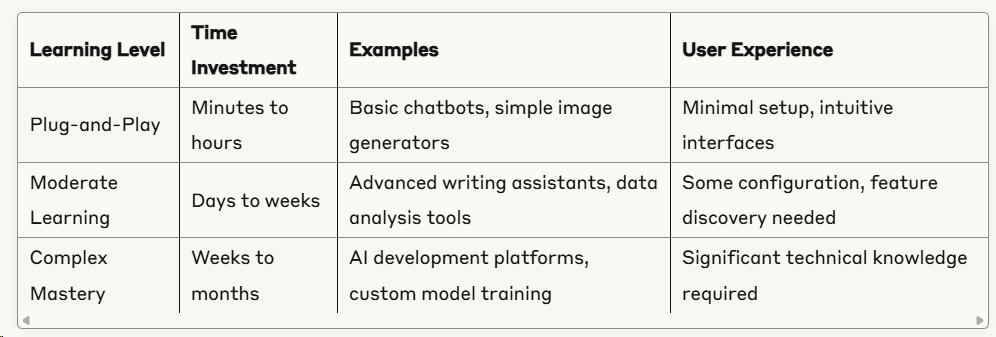
Plug-and-Play AI Tools work almost immediately with minimal instruction. These tools have streamlined interfaces and focused functionality. Think of basic chatbots where you simply type a question and get an answer.
Moderate Learning AI Tools require some time to understand their capabilities and optimal workflows. These might include advanced writing assistants where learning proper prompt techniques significantly improves results.
Complex Mastery AI Tools demand substantial time investment. These typically involve technical elements like API integration, model customization, or training parameters. Examples include AI development platforms and enterprise-grade automation systems.
What Shapes AI Tool Learning Curves?
Several key factors determine how steep an AI tool’s learning curve will be:
1. User Interface Complexity
The interface directly impacts learning speed:
- Simple interfaces with minimal options accelerate learning
- Complex dashboards with numerous settings slow adoption
- Progressive disclosure (revealing features gradually) flattens the curve
2. Technical Knowledge Requirements
The technical foundation needed varies widely:
- Code-free tools minimize technical barriers
- API-based systems require programming knowledge
- Model training tools demand AI/ML understanding
3. Documentation and Training Resources
Learning support dramatically affects adoption speed:
- Interactive tutorials reduce learning time by 40-60%
- Video demonstrations improve comprehension for visual learners
- Searchable knowledge bases solve specific challenges quickly
4. Use Case Complexity
The sophistication of your goals matters:
- Simple tasks (basic content generation) have gentle curves
- Advanced applications (multi-stage workflows) steepen significantly
- Custom implementations (industry-specific solutions) require most investment
Common AI Learning Curve Challenges
Most users face these typical hurdles when adopting new AI tools:
Prompt Engineering Difficulties
Getting an AI tool to produce exactly what you want often requires learning specific input techniques:
- Prompt structure affects output quality dramatically
- Command syntax varies between platforms
- Context limitations require working within constraints
Conceptual Misunderstandings
Many users struggle with fundamental AI concepts:
- Capabilities misconceptions lead to impossible requests
- Probability vs. determinism confusion causes frustration
- Training data assumptions create unexpected outputs
System Integration Problems
Connecting AI tools to existing workflows presents challenges:
- API authentication issues block implementation
- Data format compatibility requires transformation work
- Rate limiting disrupts production processes
Strategies to Flatten the AI Learning Curve
Use these practical approaches to master AI tools faster:
For Individual Users:
- Start with defined projects
- Begin with specific, achievable goals
- Avoid open-ended exploration without purpose
- Measure success against clear objectives
- Use the 80/20 approach
- Identify the 20% of features that deliver 80% of value
- Master core functions before exploring advanced options
- Focus on capabilities relevant to your immediate needs
- Join user communities
- Participate in official forums and social media groups
- Learn from others’ experiences and solutions
- Share challenges to get targeted advice
- Build a personal knowledge base
- Document successful prompts and workflows
- Keep notes on solutions to common problems
- Create templates for repetitive tasks
For Organizations:
- Create standardized onboarding
- Develop custom training paths for different user roles
- Build internal documentation for company-specific use cases
- Establish mentor relationships between experienced and new users
- Implement graduated access
- Start users with limited, focused functionality
- Expand access as proficiency increases
- Track usage patterns to identify training needs
- Run small pilot projects
- Test AI tools in contained environments first
- Gather feedback before wider deployment
- Document successes and failures systematically
Measuring Your Progress on the Learning Curve
Track these metrics to gauge your AI tool mastery:
Time-to-Completion Metrics
Measure how long tasks take as you progress:
- Initial baseline: Record time for first attempts
- Weekly tracking: Note improvements as you learn
- Efficiency goal: Aim for 3-5x speed improvement
Quality Assessment
Evaluate output improvements over time:
- Error rates: Track mistakes requiring correction
- Iteration counts: Monitor how many attempts needed
- Output consistency: Assess reliability across similar requests
Capability Expansion
Document your growing skill set:
- Feature utilization: Percent of total capabilities you regularly use
- Use case diversity: Number of different applications mastered
- Integration depth: How thoroughly the tool connects to your workflow
AI Tool Learning Curve: Taking Action
The learning curve for AI tools doesn’t need to be a roadblock. Follow these steps to accelerate your mastery:
- Assess your starting point honestly regarding technical skills and experience
- Choose tools aligned with your technical comfort level initially
- Allocate dedicated learning time rather than trying to learn while completing urgent tasks
- Follow a structured learning path from basics to advanced features
- Document everything as you learn for future reference
Remember that every AI tool investment requires balancing immediate productivity against long-term potential. The steepest learning curves often lead to the most powerful capabilities, but not every use case justifies that investment.
Unlock Your AI Edge — Free Content Creation Checklist
Get the exact AI-powered process to 10X your content output — blogs, emails, videos, and more — in half the time.
No fluff. No spam. Just real results with AI.

